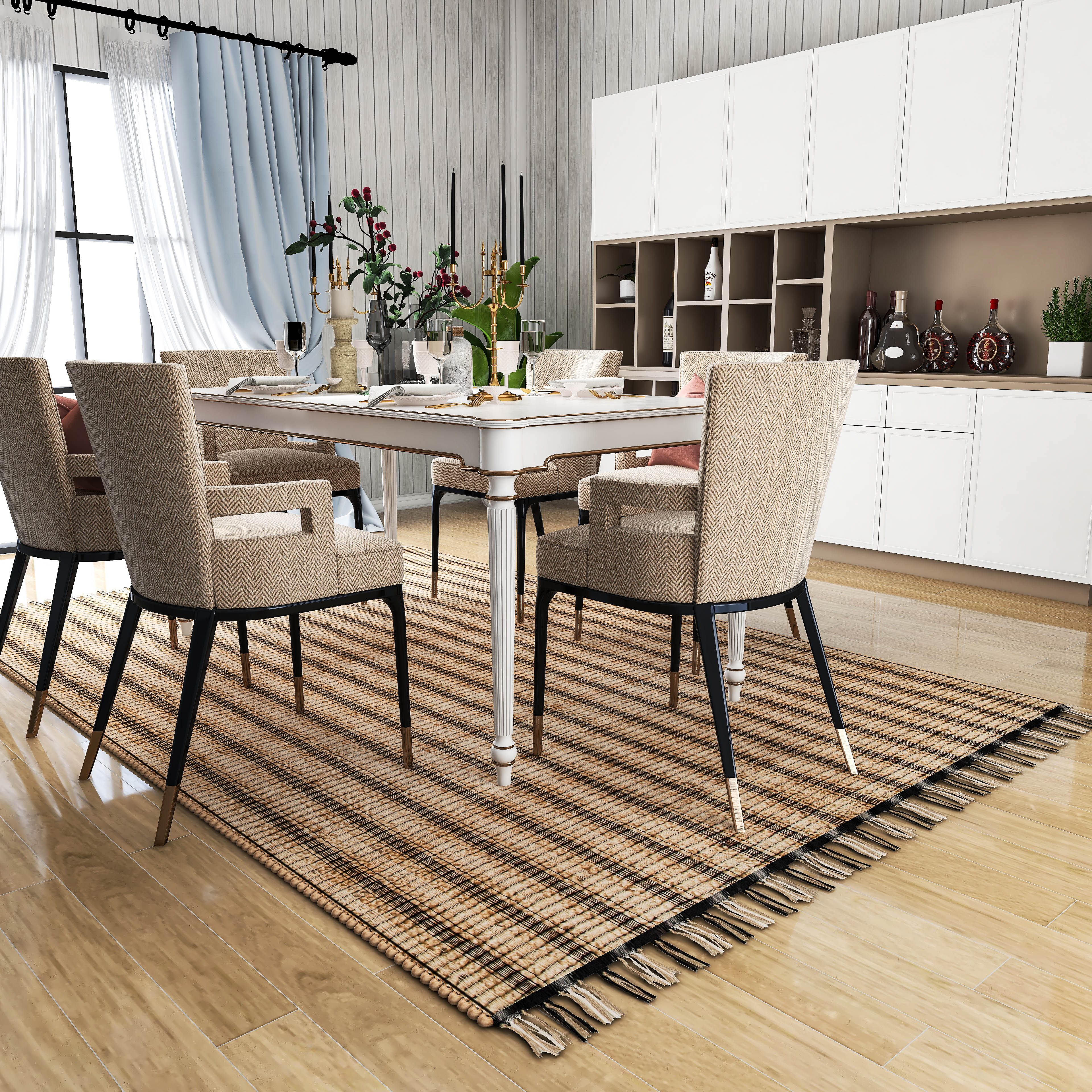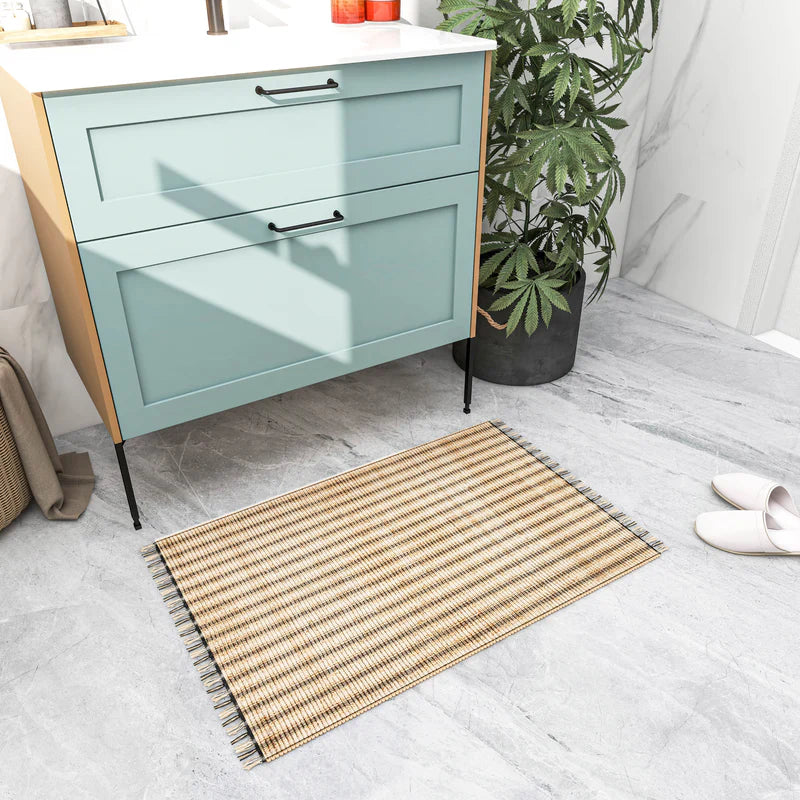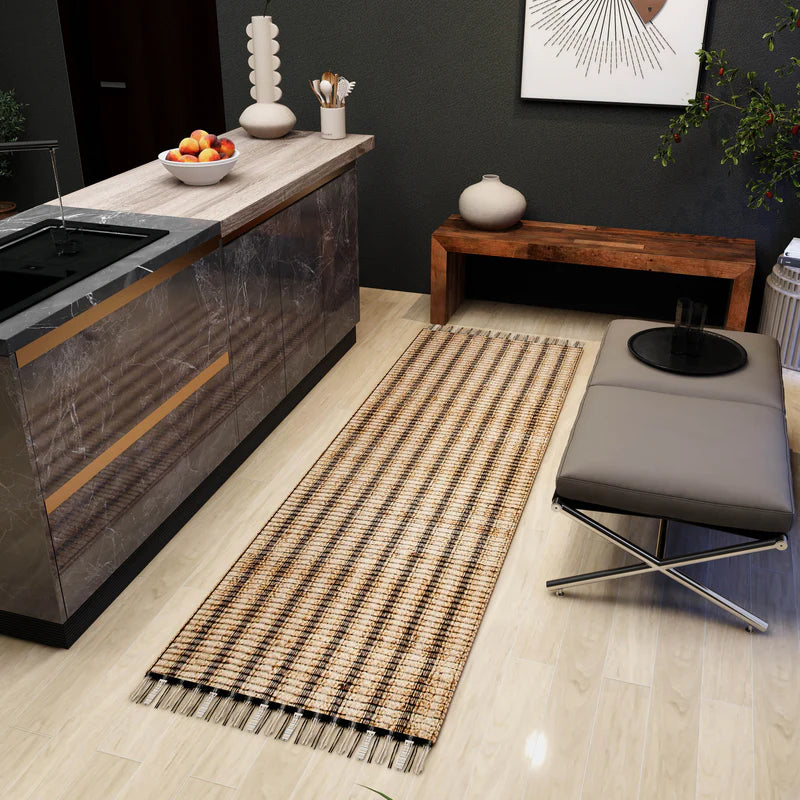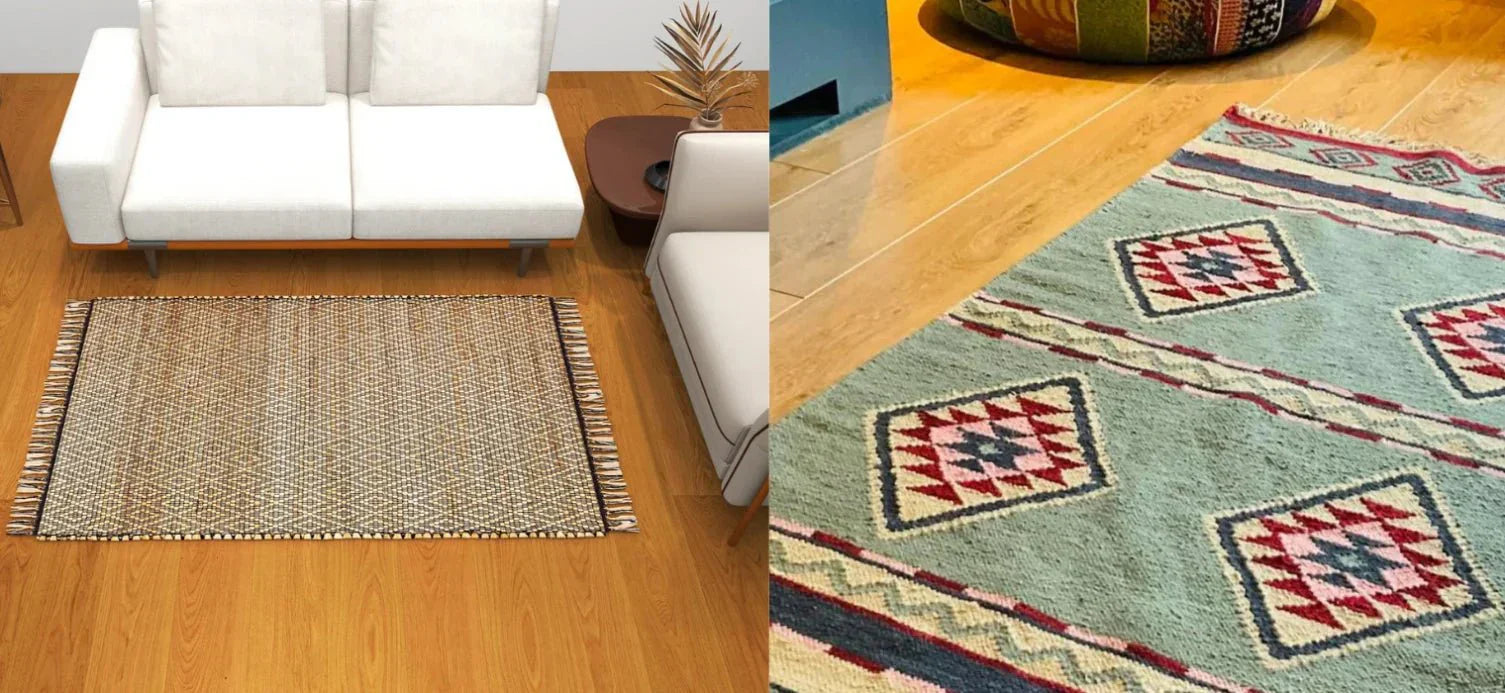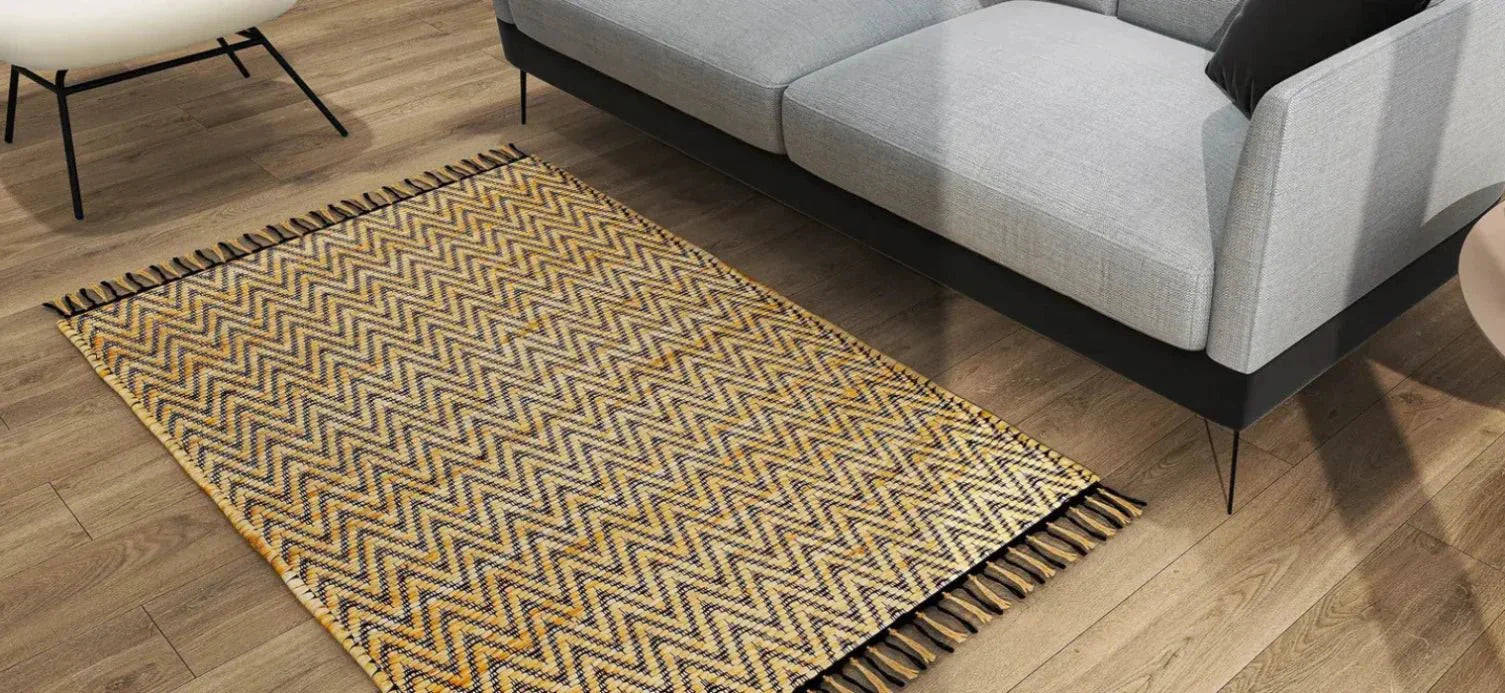
Can Jute Rugs Get Wet? Essential Tips for Preventing Water Damage
Key Takeaways:
- Jute rugs are highly absorbent and prone to water damage.
- Water exposure weakens fibers, causes stains, and leads to mold.
- Jute rugs are best used in dry, low-traffic areas.
- Avoid placing jute rugs outdoors or in humid environments.
Jute rugs have grown in popularity due to their eco-friendly nature and earthy aesthetic. They are widely appreciated for being a sustainable, biodegradable option for home decor. However, while they are an excellent choice for those seeking environmentally responsible materials, the question arises: Can a jute rug get wet?
Understanding how to care for a jute rug, particularly when it comes to moisture, is essential to maintaining its longevity and appearance. In this article, we’ll explore how jute reacts to water, what to do if it gets wet, and how you can protect your jute rug from potential damage.
Can Jute Rug Get Wet?
Jute rugs are made from natural plant fibers that are not water-resistant. When exposed to water, jute tends to absorb it quickly, which can lead to several issues. This includes weakening of the fibers, the possibility of mold growth, and unpleasant odors. Given its delicate relationship with moisture, it's critical to keep jute rugs as dry as possible. Let’s dive deeper into why jute and water don’t mix.
Understanding Jute Rugs and Moisture
What Is a Jute Rug?
Jute rugs are woven from the natural fibers of the jute plant, which grows primarily in tropical regions like Bangladesh and India. These fibers are highly durable in dry conditions and provide a rustic, organic look that blends well in many home decor styles. Jute rugs are also biodegradable, making them a sustainable alternative to synthetic rugs.
However, jute is naturally absorbent, meaning it can easily take on water and moisture from its surroundings.
Why Jute and Water Don’t Mix
The absorbent quality of jute, while beneficial for its texture and durability in dry environments, makes it highly vulnerable to water damage. Unlike synthetic materials or even wool, which can resist moisture to a degree, jute soaks up water quickly. This is due to the natural plant fibers that are designed to absorb water in their natural environment.
When these fibers are woven into rugs and exposed to moisture, they weaken, becoming brittle over time. Additionally, damp jute rugs can become breeding grounds for mold and mildew, making it crucial to avoid water exposure.
What Happens When Jute Gets Wet?
How Water Affects Jute Fibers
When a jute rug gets wet, the fibers begin to break down. The water can cause the jute to lose its structural integrity, making the rug feel weaker and more brittle. In extreme cases, the fibers can start to fray or unravel. Water also causes discoloration, often leading to brown or dark stains where the water has settled, which is difficult to remove.
The Effects of Prolonged Water Exposure
Prolonged exposure to moisture can be particularly devastating for jute rugs. If left in a damp environment or repeatedly exposed to spills and wetness, a jute rug can develop mold and mildew, leading to a musty odor. Mold not only damages the rug but can also pose health risks to those in the household.
For example, a Reddit user once shared a story of their Vistoft jute rug being ruined by floodwater, illustrating the challenges of restoring jute after significant water exposure. If a jute rug gets thoroughly soaked, restoration may be impossible.
How to Prevent Water Damage to Jute Rugs
Indoor vs. Outdoor Use
One common misconception is that jute rugs can be used outdoors. While their natural look complements outdoor spaces, jute rugs are not designed for outdoor use due to their vulnerability to moisture. Rain, humidity, and even dew can quickly damage the fibers.
Outdoor rugs need to be made from more water-resistant materials like polypropylene or other synthetic fibers that can withstand weather exposure. Therefore, it’s best to reserve jute rugs for indoor use in dry, low-traffic areas.
Care Tips to Protect Jute Rugs
Protecting your jute rug from water damage involves a few simple, but crucial, steps:
- Dry Spills Immediately: If a spill occurs on your jute rug, it’s essential to act fast. Blot the spill with a dry cloth to absorb as much liquid as possible. Avoid rubbing, as this can spread the moisture and push it deeper into the fibers.
- Use a Rug Pad: Placing a moisture-resistant rug pad beneath your jute rug can help protect it from dampness coming from the floor. This is especially important if the rug is placed on a surface prone to moisture, such as concrete or tile.
- Regular Maintenance: Regular vacuuming and airing out your jute rug can prevent the buildup of dust and moisture that may lead to mildew. Additionally, keeping your home’s humidity levels in check will reduce the risk of water damage.
What to Do If Your Jute Rug Gets Wet?
Immediate Steps for Drying a Wet Jute Rug
If your jute rug gets wet, it’s important to dry it out as quickly as possible to prevent long-term damage. Here are some steps you can take:
- Blot the Water: Use a clean, dry towel to blot up as much water as possible. Press down gently to absorb the moisture, but avoid rubbing or scrubbing.
- Air Dry the Rug: Place the rug in a well-ventilated area, preferably outside in the shade. Direct sunlight can cause fading, so it’s best to air dry in a shaded spot. You can also use fans to speed up the drying process.
- Flip the Rug: If the rug is thoroughly wet, flip it over so that both sides have a chance to dry. This will prevent moisture from becoming trapped on the underside.
Can a Water-Damaged Jute Rug Be Restored?
The restoration of a water-damaged jute rug depends on the extent of the damage. For small spills or minor water exposure, thorough drying may be enough to prevent long-term effects.
However, for significant water damage, such as a rug being submerged in water or exposed to constant moisture, restoration is unlikely. In such cases, professional cleaning services may be able to offer some help, but there is no guarantee the rug will return to its original condition.
Jute Rugs and Humid Environments: A Bad Combination?
Jute rugs do not fare well in humid environments due to their absorbent nature. Even if the rug is not directly exposed to water, high humidity levels can cause the fibers to absorb moisture from the air, leading to the same issues of weakening, discoloration, and mildew.
To avoid these problems, jute rugs should be used in dry areas with good ventilation, such as living rooms or bedrooms, rather than bathrooms or basements.
Best Places to Use Jute Rugs
Ideal Locations
The best locations for jute rugs are low-traffic, dry areas in your home. Bedrooms, living rooms, and home offices are great places to showcase the natural beauty of a jute rug while minimizing the risk of spills or moisture damage. Avoid placing jute rugs in kitchens, bathrooms, or entryways, where they might be exposed to water or high humidity.
Alternatives to Jute for Moisture-Prone Areas
For areas that are prone to moisture, such as bathrooms or outdoor patios, it’s best to opt for synthetic or water-resistant materials like polypropylene. These rugs are designed to withstand moisture and are easy to clean, making them better suited for environments where spills or dampness are common.
In summary, while jute rugs are beautiful, sustainable, and affordable, they are not designed to handle moisture well. Water can quickly lead to the weakening of fibers, discoloration, mold growth, and even irreparable damage.
By taking preventive measures such as drying spills immediately, using rug pads, and keeping jute rugs in dry environments, you can preserve the look and feel of your rug for years to come. If your jute rug does get wet, acting quickly to dry it is key to preventing permanent damage. In moisture-prone areas, it’s best to consider alternatives to jute that offer greater water resistance.
FAQ Section
What happens if a jute rug gets wet?
Jute rugs weaken, discolor, and may develop mold when exposed to water. Immediate drying is crucial to prevent lasting damage.
Can jute rugs be left outside?
No, jute rugs are not suitable for outdoor use. They absorb water and deteriorate quickly when exposed to rain or humidity.
What are the disadvantages of jute rugs?
Jute rugs absorb moisture, are prone to staining, wear out in high-traffic areas, and may feel rough underfoot.
Does water stain jute rugs?
Yes, water can stain jute rugs, leaving brown or dark marks. Immediate drying helps prevent permanent stains.





